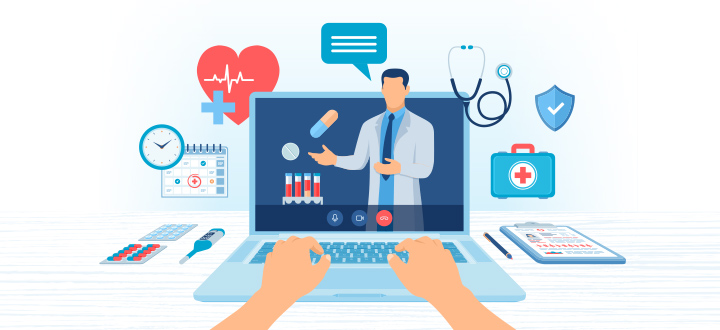

Vignesh
Behavioural Changes Due to the COVID-19 Pandemic
Introduction
Though change is unavoidable, the impact it creates is always significant and long-lasting. There has been an evolution in terms of change, and every change has both positive and negative effects on us and the way we carry out our everyday activities. One of the recent changes that impacted us is the onset of the pandemic at the latter end of 2019.
Covid-19
The Covid-19 pandemic has brought families together and fear among us as well. The catastrophe of the pandemic is having a significant effect on the lives of millions of people. Travel restrictions across the globe have brought down the tourism industry, and countries that have relied on tourism have taken a big hit economically. However, in the first half of 2020, people understood the harmfulness the virus can cause and the rate at which it could spread and affect a person.
People feared coming out in the open and interacting with others. However, in Feb 2020, the first Covid-19 death was confirmed in the USA for a male with no travel history to China. The situation turned worse as the cases rose to unbelievable numbers and the deaths reported started to go out of control. By March 2020, the number of confirmed cases worldwide touched the 100,000 mark, and WHO declared the outbreak a “Global Pandemic”. Everyone felt that staying behind the doors was the only way to protect themselves and their family as the pharmaceutical firms started identifying vaccinations to get rid of the virus. With the rising cases and time running out to save lives, pharma companies had no other option but to come up with vaccinations that went through minimal clinical trials and were optimistic that it would bring an end to the pandemic. However, the virus had other ideas.
When the world just thought that vaccinations would help stop the pandemic, the virus started mutating into a different strain and became a nightmare to the whole world. The situation became chaotic, with hospitals flooded with patients suffering from respiratory issues. Overall, the death toll took new heights every day, and people were terrified of the situation.
Behavioural Changes
Behaviourism is a branch of psychology that deals with the behaviour of human beings influenced by the external environment. With the ongoing pandemic, we could see drastic changes in the way people behave in a social structure. The global pandemic forced the authorities to take measures and curb the spread of the virus, affecting the public at large. The economic recession has also negatively impacted many people’s lives, affecting their mental health. The number of people reporting mental illness rose by a staggering 25% in the US during the pandemic to what it was in 2019. The worry and stress over the pandemic increased the reported cases of adults with sleeping disorders, alcohol and substance use, difficulty in eating and undesirable effects on well-being and personal safety. Job loss due to Covid-19 restrictions and decreased monthly wages increased the mental illness amongst the middle-aged population.
Student’s Muddle
The impact of coronavirus hit the younger generation strongly, and online classes for children was the need of the hour and the only option to take education forward. Also, according to some reports, it was noted that households with younger people (less than 18 years) reported more anxiety or stress-related illness.
Worker’s Torment
The prolonged pandemic made workers face a lot of uncertainties. A sedentary lifestyle impacted the physical and mental health of all the employees. Anxiety, job insecurity, and constant stress haven’t helped employees overcome fear. The psychosocial risks are on the rise due to the loss of jobs. The current Omicron variant is rising and spreading at an alarming rate. Society now is more virtual than real. People prefer to meet over Skype than meet them in person and maintain a distance from fellow beings both physically and emotionally.
Changes in Healthcare
The impact of Covid-19 has permanently affected the behaviour of many people and has impacted the healthcare industry as well. Every technology that has emerged during this pandemic is related to the health industry, e.g., mental wellness or physical wellness.
Patients with chronic conditions suffered a lot as they did not receive timely care during the initial days of the pandemic. The hospital staff and frontline workers were busy treating the patient with coronavirus leading to the potential risk of worsening the chronic conditions among patients. Moreover, parents were hesitant to take their children to the hospital due to virus-infected patients. People with older parents were also sceptical of taking them to the hospital as the risk of getting caught with the virus was high.
All these hesitations and fear transformed the healthcare industry’s way of providing care to patients. Remote patient monitoring grew popular among doctors and other healthcare professionals. It rose in popularity because of its ease of use with which healthcare delivery was possible. Patients were not required to visit hospitals or clinics anymore.

The Remote Patient Monitoring application connects the patients with their providers remotely with the help of a camera. The vitals are collected using wearables or any special devices. It turned out to be a boon for chronic patients who needed care almost at every hour of a day. Even providers and hospitals found this technology productive, as the patients could stay at home safely and still get the required care.
CMS and other governing authorities across the globe have encouraged remote care options along with other guidelines. They have come up with many programs to increase its efficient use. Even the payers have made necessary changes to ensure appropriate coverage for remote monitoring of the patients. Also, it helps the payments to be done promptly, and the usage is tracked in an organized way. The hospitals came up with many promotional programs to encourage patients to opt for remote care to avoid unnecessary hospital visits. Apart from remote monitoring, the usage of wearables and real-time tracking devices of vitals have also gained fame during the pandemic. Many tech giants created wearables, and various integrations were made to collect the data points, thus improving the quality of care.
Conclusion
The worst pandemic of current human history has made life difficult for everyone. We hope that it comes to an end as early as possible. However, one cannot deny that the impact it has created will stay longer than the pandemic itself. The repercussions of Covid-19 on the younger generation of this pandemic era may find it difficult to connect socially and emotionally because of less exposure to the outer world.





